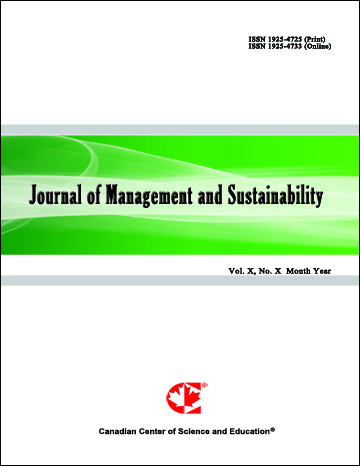Impact of City Social Responsibility and Marketing Strategy on City Image and People’s Perception
- Shwu-Ing Wu
- Ni-Wei Liou
Abstract
In recent years, the issue of Corporate Social Responsibility (below referred to as “CSR”) has received considerable attention. The term CSR is usually associated with enterprises, while the social responsibility of cities is rarely explored. However, cities resemble non-profit enterprises and whether or not they fulfill their social responsibility has a significant impact on future development. This study therefore conducts a literature analysis and empirical research to investigate the impact of city social responsibility and city marketing strategies on the city image and perceptions of the general public. The research object of this study is Taichung City in Taiwan. A survey was conducted and 548 valid questionnaires were collected from non-local residents. After a group model comparison of two groups divided by high or low frequency of trips to Taichung it was discovered that: (1) Both groups exhibit a significant positive correlation between the fulfillment of city social responsibility and people’s trust. (2) The high frequency group shows a significant positive correlation between the fulfillment of city social responsibility and city image, while the low frequency group shows no such relationship and a significant difference exists between the two groups. (3) The low frequency group shows a significant negative correlation between the implementation of marketing strategies by the city and public trust. (4) Both groups exhibit a significant positive correlation between the implementation of marketing strategies by the city and city image and the correlation intensity is considerably higher for the low frequency group. (5) Both groups show a significant positive correlation between the implementation of marketing strategies by the city and people’s intention. (6) Both groups exhibit a significant positive correlation between city image and people’s trust. (7) The high frequency group shows a significant positive correlation between people’s trust and people’s intention, while the low frequency group shows no such relationship and a significant difference exists between the two groups. The results of this study clearly indicate that the behavior patterns of groups with different travel frequencies are somewhat distinct. City administrators should therefore pay special attention to the planning of city CSR and city marketing strategies to be able to attract visits, investments, and settlement by target groups.
- Full Text:
 PDF
PDF
- DOI:10.5539/jms.v5n4p30
Journal Metrics
Google-based Impact Factor (2021): 1.54
h-index (July 2022): 37
i10-index (July 2022): 147
h5-index (2017-2021): 12
h5-median (2017-2021): 19
Index
- Academic Journals Database
- ANVUR (Italian National Agency for the Evaluation of Universities and Research Institutes)
- CAB Abstracts
- CNKI Scholar
- EconBiz
- Excellence in Research for Australia (ERA)
- GETIT@YALE (Yale University Library)
- Harvard Library
- HeinOnline
- Infotrieve
- JournalTOCs
- LOCKSS
- MIAR
- PKP Open Archives Harvester
- RePEc
- Scilit
- SHERPA/RoMEO
- Stanford Libraries
- UCR Library
Contact
- Evelyn XiaoEditorial Assistant
- jms@ccsenet.org
